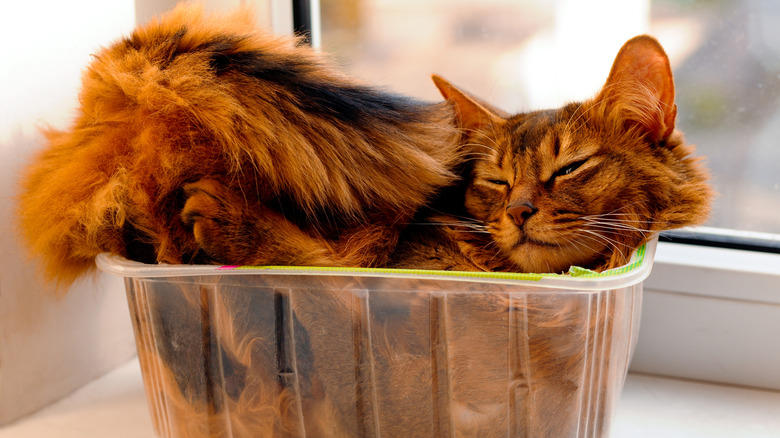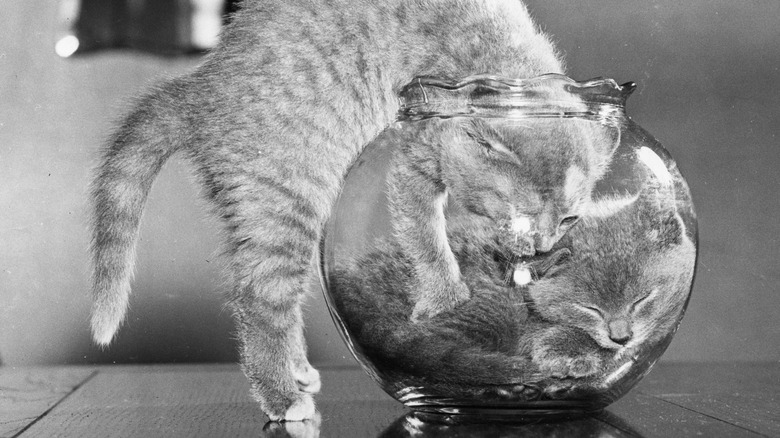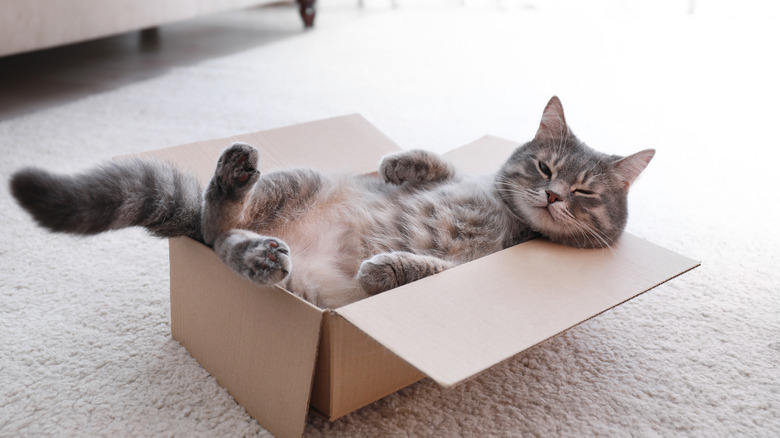Scientist Reveals Cats Are Technically A Liquid
Humanity as a whole is obsessed with cats, as a brief glimpse at any popular meme site or social media network will show you. It isn't recent; our love affair with furry felines goes back thousands of years. Ancient Egyptians believed that cats were holy: after hundreds of years of employing cats as useful predators against vermin, the ancients came to believe that these household helpers could act as vessels for divine beings, according to History. Ancient Egyptians were reportedly dead serious about the importance of cats in everyday life, and felines featured prominently in Egyptian art. Cats were even mummified, and were believed to be loyal companions who would accompany dead humans into the afterlife.
But while the serious belief in the holiness of felines has been left in the distant past — for most of us — cats are still the subject of some strange, albeit tongue-in-cheek, claims. One of these is that slinky, stretchy cats are not a solid, but are in fact a liquid, a claim that is illustrated by online cat lovers with photos of cats looking, well, quite liquid-y. Sure, you could write the idea off as simply another silly meme, but bizarrely, the liquid cat theory has gained some traction in the scientific community, and recent research has shown that, on paper at least, the theory is true.
A visionary scientist
Cometh the liquid theory of cats, cometh the up-and-coming young scientist willing to put the theory to the test. Marc-Antoine Fardin is a French physicist specializing in rheology, the study of what the scientific community and sources such as Nature term the "deformation" of material — for example, the physical laws that underpin the flow of a liquid. Per the same source, the central question of rheology is how a given material changes in response to a force, usually referred to in the field as "stress," measuring the effect with the equation: "Force = (property) x (measure of response)."
In 2014, Fardin published a paper in the Rheology Bulletin, titled "On the Rheology of Cats," which begins by quoting the Ancient Greek philosopher Heraclitus: "Everything flows and nothing abides; everything gives way and nothing stays fixed." In rheology, this is in many ways true. Given enough time, even the movements of the Earth can be measured using the same methodology that could be utilized to measure the flow of water, which Fardin also notes in a later article for The Conversation. Per the same source, Fardin felt inspired by memes of cats reclining in strange positions in various containers, leading him to ask the question of whether cats are indeed a liquid. He came to the conclusion that, like a liquid, given enough time, cats change shape to fit their container — "Cats are thus liquid if we give them the time to become liquid" — though also noting that in the field of rheology the question of solid and liquid states is considered to always be in flux.
Award-winning research
So cats really are a liquid because, in the field of rheology at least, pretty much everything is. Luckily for cat lovers, however, felines seem to have the ability to demonstrate this when they effortlessly curl up in a box, fruit bowl, glass jar, or whatever else strikes their fancy.
Marc-Antoine Fardin was of course being playful when he published his research in the Rheology Bulletin back in 2014, but three years later his efforts were rewarded by one of the most prominent rewards in science: the Ig Nobel Prize.
The Ig Nobels are awarded annually for unusual scientific research, and honors research that makes people "laugh then think," according to the award's website. So while Fardin's work is funny on paper, the fact that it introduces readers to the core concepts of rheology made him a perfect recipient of the award in 2017, alongside researchers investigating Brazilian insects that mate for 70 hours, and others researching the effects on fetuses of tampons that play music (via Science).


